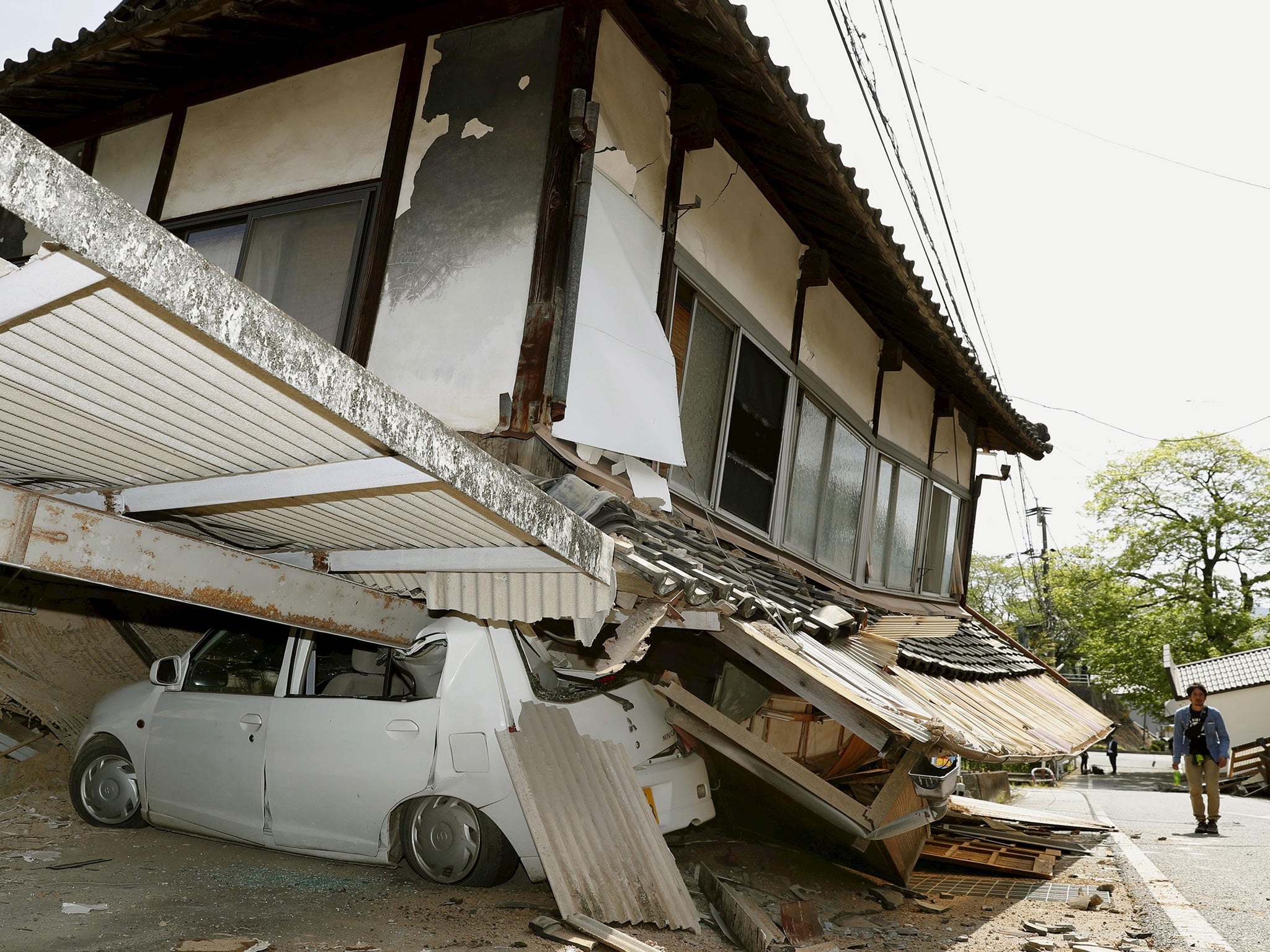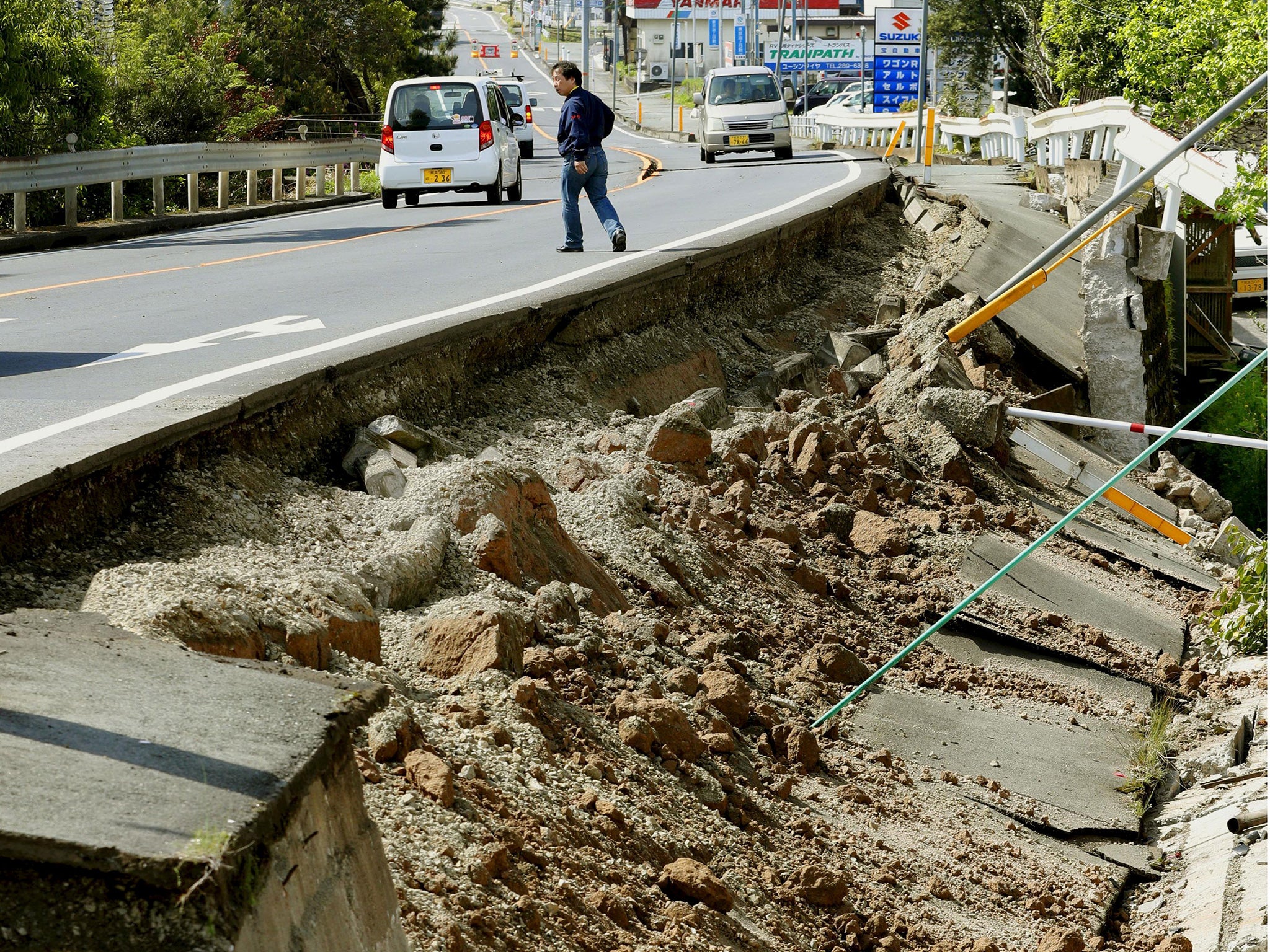Japan earthquake: Tsunami alert after 7.3 tremor his south of country – 24 hours after 10 died in separate quake
At least three people are believed to have died in the second quake

Your support helps us to tell the story
From reproductive rights to climate change to Big Tech, The Independent is on the ground when the story is developing. Whether it's investigating the financials of Elon Musk's pro-Trump PAC or producing our latest documentary, 'The A Word', which shines a light on the American women fighting for reproductive rights, we know how important it is to parse out the facts from the messaging.
At such a critical moment in US history, we need reporters on the ground. Your donation allows us to keep sending journalists to speak to both sides of the story.
The Independent is trusted by Americans across the entire political spectrum. And unlike many other quality news outlets, we choose not to lock Americans out of our reporting and analysis with paywalls. We believe quality journalism should be available to everyone, paid for by those who can afford it.
Your support makes all the difference.A powerful earthquake with a magnitude of 7.3 has struck southern Japan, barely 24 hours after a smaller quake hit the same region and killed nine people.
The Japanese Meteorological Agency issued a tsunami alert for slight sea level changes in Ariake and Yatsushiro seas but has since lifted it.
Three people are believed to have died and there were reports of damage, including some collapsed buildings and cracked roads, public broadcaster NHK reported.
More than 400 people were treated at local hospitals
A nearby village and a hospital were also reportedly evacuated because they were no longer safe.
The BBC reports a city hall is so badly damaged there are fears it could collapse and TV news channels have shown footage of a neighbourhood on fire.
Thousands of people have reportedly fled onto the streets and into parks fearing aftershocks but many people - particularly the elderly - are reportedly trapped inside buildings.
Saturday's quake shook the Kumamoto region at 1:25am, and several aftershocks soon followed.
The agency upgraded the magnitude to 7.3 from an initial reading of 7.1.

The most recent quake and aftershocks appeared to be moving east, spreading damage to the northeast.
Chief Cabinet Secretary Yoshihide Suga, in an emergency news conference early Saturday morning, said more than 300 calls came in to the Kumamoto police and another 100 to police in nearby Oita, seeking help and reporting people trapped or buried underneath debris.
It follows a magnitude 6.2 earthquake which struck the island of Kyushu on Thursday evening, killing ten people.
The quake hit at 9.26pm local time seven miles east from the town of Mashiki.
The dead included five women and four men. One man was was in his 20s, and the rest of the victims ranged from their 50s to one woman in her 90s. The majority of the victims were from Mashiki.
A tenth person died later in hospital.
Mr Suga, said at least 860 people were injured in Thursday's earthquake, 53 seriously. Kumamoto prefecture tallied 784 injured.
A further 44,000 people were forced to stay in shelters overnight after buildings collapsed.
Power and water were yet to be restored on Friday and many are frightened to return to their homes because of the aftershocks.
According to Mr Suga, 1,600 soldiers had joined the relief and rescue efforts. TV reports showed troops delivering blankets and adult diapers to those in shelters.

One resident, Yuichiro Yoshikado, described the moment the walls began to shake as he was taking a bath in his apartment.
He said: "It's as if all control was lost, I thought I was going to die and I couldn't bear it any longer.
"I grabbed onto the sides of the bathtub, but the water in the tub, it was about 70 percent filled with water, was going like this," he said waving his arms, "and all the water splashed out."
Mr Suga said there were no reported abnormalities at the nearby nuclear plant.
The epicentre of Thursday night’s earthquake was 120km (74 miles) northeast of Kyushu Electric Power Co.’s Sendai nuclear plant - which is currently the only operating plant of its kind in the country.
The Sendai plant was reopened in August last year, four years after all nuclear power production was suspended by the Japanese government following the Fukushima nuclear disaster in March 2011.
A magnitude 9.0 earthquake hit the Tohoku prefecture on 11 March and triggered a tsunami which led to the meltdown of the Fukushima plant.
At least 15,000 people died in the disaster and many have still not been able to return to their homes four years on.
Additional reporting by agencies
Join our commenting forum
Join thought-provoking conversations, follow other Independent readers and see their replies
Comments